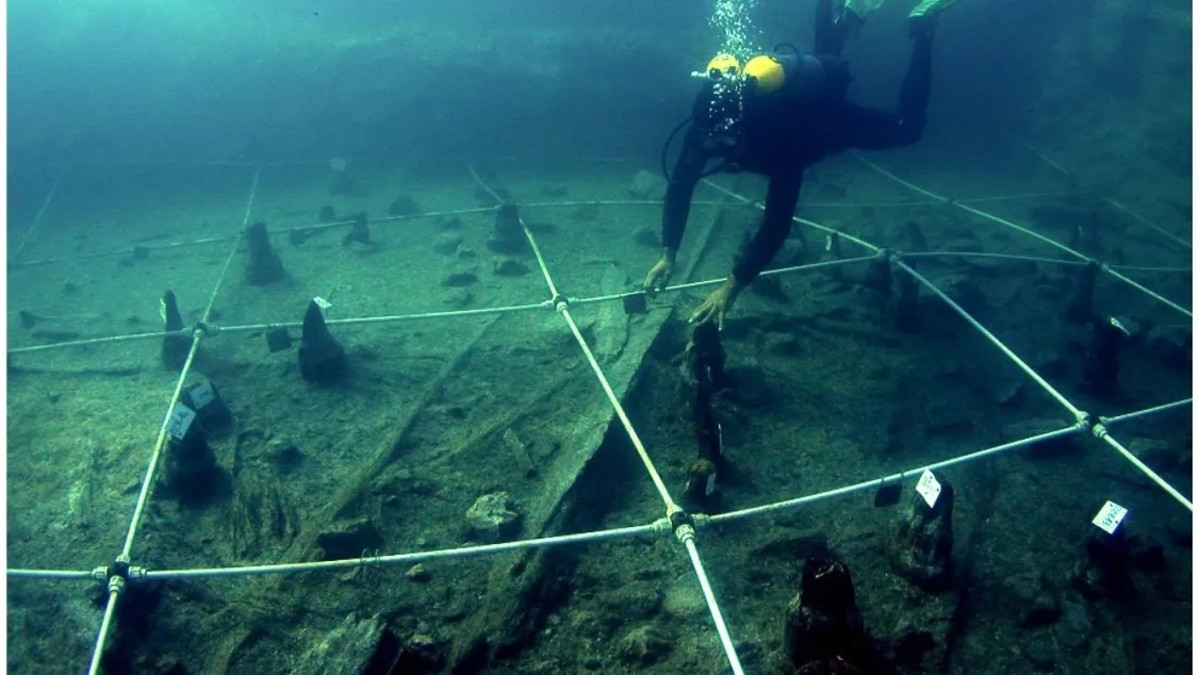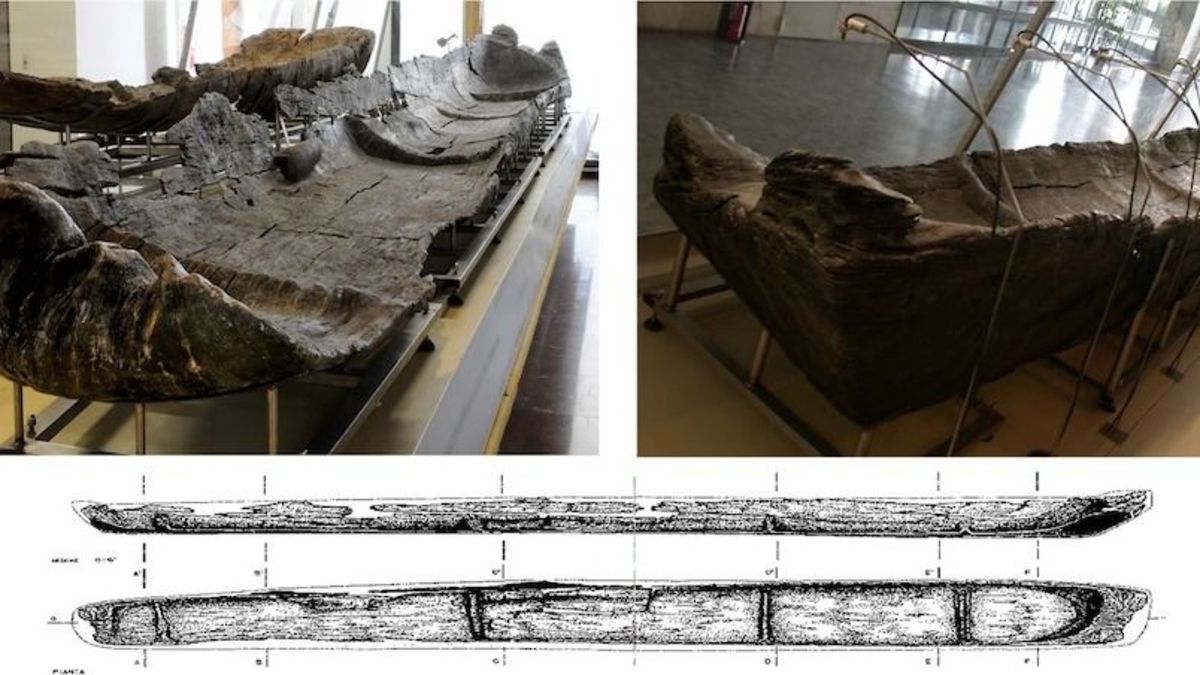Archaeologists made an astounding discovery at the bottom of a lake in Italy. Five canoes estimated to be roughly 7,000 years old were found at the bottom of Lake Braccianno within the prehistoric coastal settlement La Marmotta, which is now underwater. Researchers came across the vessels while conducting ongoing excavations at the site. PLOS One and Live Science reported the magnificent find.
Radiocarbon dating determined that the canoes were constructed between 5700 B.C. and 5100 B.C. out of alder, European beech, oak, and poplar. They are the oldest boats to ever be found in the Mediterranean region.
"One of the smallest [boats] was probably used for fishing," Mario Mineo, one of the study’s co-authors and an archaeologist at Rome’s Museum of Civilization in Rome, told Live Science. "The two largest measured almost 11 meters long by 1.2 meters wide [36 feet by 4 feet] and it is probable that—thanks also to the easy access to the Tyrrhenian coast via the Arrone river—they could have been used for further trade."

Gibaja et al., 2024, PLOS ONE, CC-BY 4.0

Gibaja et al., 2024, PLOS ONE, CC-BY 4.0
Researchers determined that the makers of the boats used "advanced construction techniques" to build the vessels. The canoes were made with “transverse reinforcements,” which increased the durability of the ship’s hulls. The watercraft were also equipped with “sails or outriggers,” evidenced by T-shaped wooden objects found at the site. Each of the objects was fashioned with a number of holes, likely used to "fasten ropes tied to sails or other nautical elements,” the study notes.
Equally notable was the builders’ use of multiple wood sources. "In contrast, at other [Neolithic] sites where more than one canoe has been found, the same [tree] species was usually used for all of them," Niccolò Mazzucco, the study’s senior author and a senior researcher at Italy’s University of Pisa, told the outlet.
"The construction techniques and materials used indicate a sophisticated understanding of boat-building and navigation," Mazzucco explained. "[This] is significant because it showcases the ingenuity and skill of ancient peoples in utilizing natural resources to create efficient means of transportation."
However, Mazzucco admitted that many questions remain about the ancient culture’s construction methods. "Such advancements suggest a deeper comprehension of maritime technology and navigation, with vessels equipped for long-distance voyages," she said.
"However, our current understanding falls short of precisely identifying the types of boats used, their construction methods, and how components like canoes and T-shaped wooden objects were mounted together—whether through ropes, wooden pegs, or other means."
Researchers are still scouring the site with the hopes of turning up more information that might shed light on their most recent discovery. In addition to the canoes, archaeologists located flint and obsidian tools, pottery vessels, ornaments, and figurines at the site.
"These artifacts offer further insights into the daily lives, symbolic and technological capabilities of the ancient inhabitants," Mazzucco told Live Science. "No other site in the Mediterranean presents such [an] amount of harvesting tools."
from Men's Journal https://ift.tt/KvI0ZUj
No comments:
Post a Comment